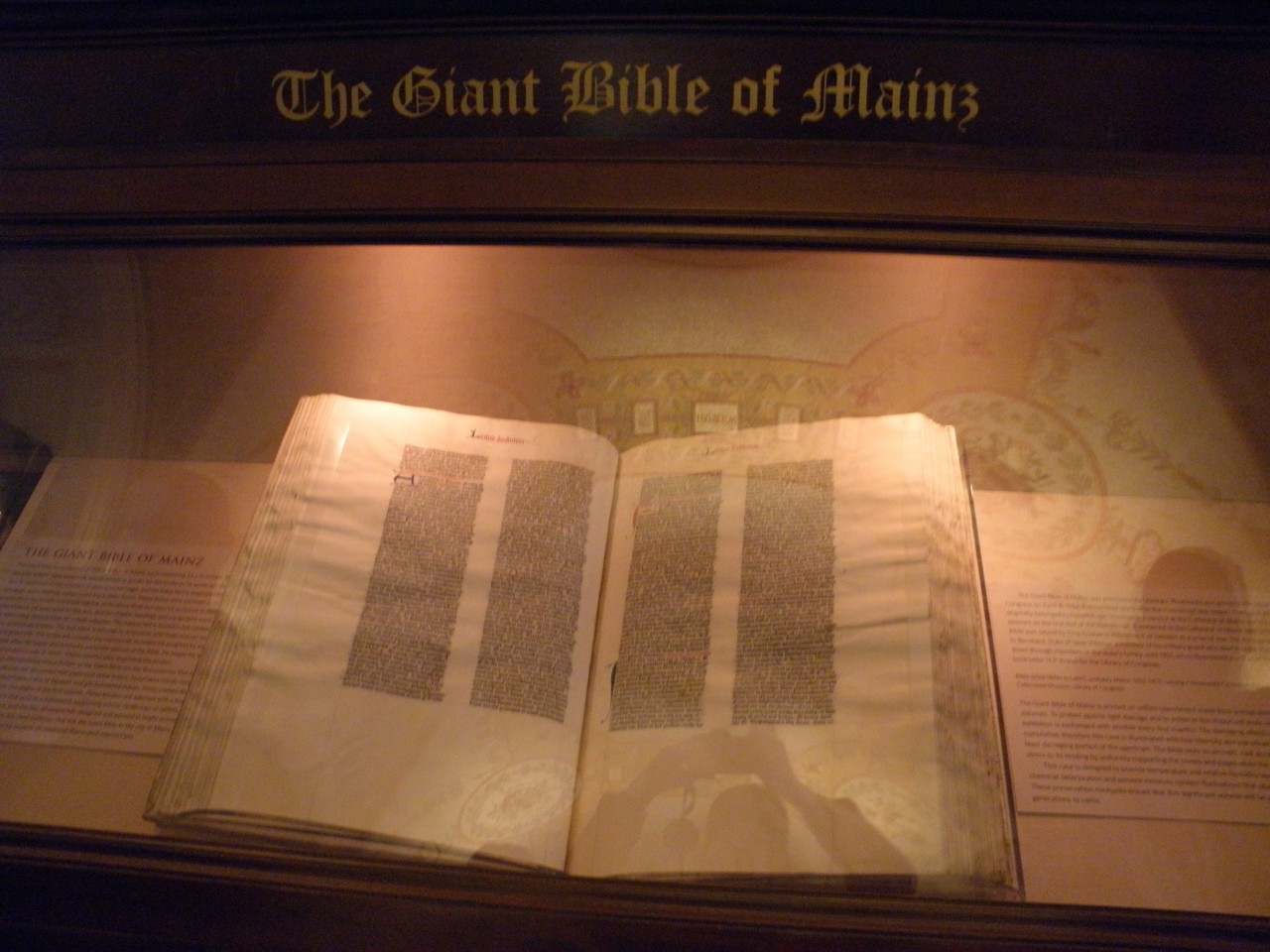he Giant Bible of Mainz is one of the last great handwritten giant Bibles in Europe. It represents the culmination of hundreds of years of transmission of text through the handwritten manuscript.
The Giant Bible is composed of 459 vellum skin leaves, each measuring 22 x 16 inches. The pages are fully ruled in faint brown ink, which served as guides for the scribe as he wrote out the text. The text is organized in two columns of sixty lines per page, and the letter forms employed by the scribe are large, erect, laterally compressed black letter forms. These forms were common in manuscripts produced in the middle and lower regions of the Rhine River but was not exclusive to Mainz. Two tones of black ink were used for the text, and the chapter headings and paragraphs were highlighted with alternating red and blue ink in both volumes. The manuscript is bound in full contemporary pigskin, without decoration. The text block is secured by nine cords with head and tail bands of red, white, and green silk. The scribe who created the manuscript recorded his progress by writing the specific date when he began and finished a particular section of the Bible. He began his work on April 4, 1452, and ended on July 9, 1453—fifteen months after beginning the project.
The most distinguishing characteristic of the Giant Bible are the illuminations that embellish the text. The two volumes are decorated with patterned initial letters, historiated initials (large letters that contain an identifiable scene or figures), and gilt-burnished initials. Finely crafted decorative borders are found on five pages of the first volume. These borders are adorned with a branch, vine, and floral pattern that acts as a framework supporting artistic renderings of rabbits, hunters, stags, princesses, bears, and the like, all exquisitely designed and painted in bright primary colors. These border designs are the chief evidence that link the Giant Bible to the city of Mainz and are continuously being studied by experts on medieval illuminated manuscripts.
The Giant Bible of Mainz was purchased by Lessing J. Rosenwald and gifted to the Library of Congress on April 4, 1952, five hundred years after the manuscript was begun. The Giant Bible originally belonged to Heinrich von Stockheim, a curator at the Cathedral of Mainz and his inscription appears on the first leaf of the manuscript. It remained in the Cathedral of Mainz until 1631, when the Bible was seized by King Gustavus Adolphus II of Sweden as a prize of war. The King gave the Bible to Bernhard, Duke of Saxe-Weimar, a member of his military guard who died in 1639. The Bible passed down through members of the duke’s family until 1951, when Rosenwald purchased it through the bookseller H.P. Kraus for the Library of Congress.
https://www.loc.gov/exhibits/bibles/the-giant-bible-of-mainz.html


